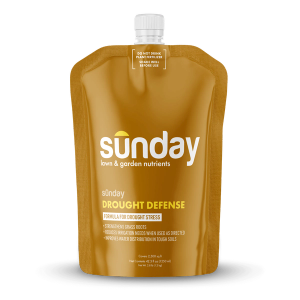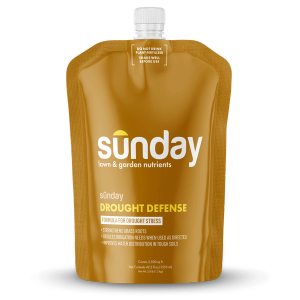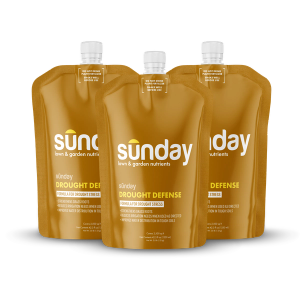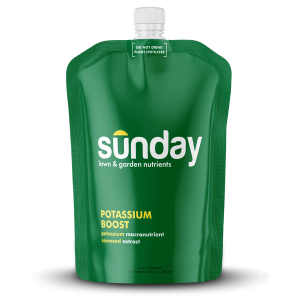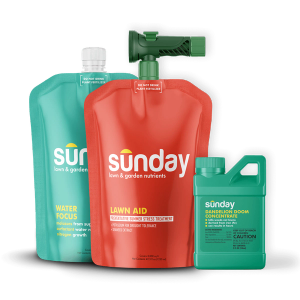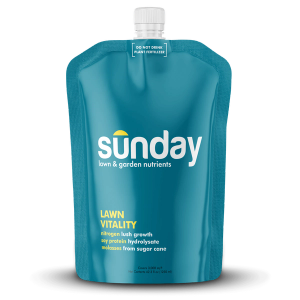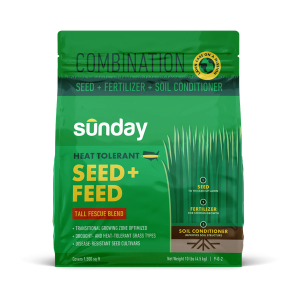When to apply Lawn Aid
Apply Sunday's Lawn Aid lawn treatment when grass is actively growing in early spring, typically April to June.
Early application helps to prep your lawn for heat stress before summer heat sets in. For best results, continue to apply every 4-6 weeks*.
*up to 8 times throughout the season
Sunday Tip:
Want to apply Lawn Aid with your custom lawn plan? Look for application dates on your My Plan page.
How to apply with a Sunday custom lawn plan
Granular fertilizer plans
Wait 7+ days between applying granular fertilizer and Lawn Aid to your lawn. If it's been 7+ days, use it when the grass is growing and isn't stressed.
Liquid fertilizer plans
Allow at least one week between liquid nutrient applications—before or after your first application date. Apply anytime grass is growing and not stressed.
How to apply Lawn Aid
Prep the pouch
Shake the pouch well. Remove the cap and attach the hose-end sprayer nozzle.

Attach your hose
Attach your hose to the hose-end sprayer nozzle. Turn on the water and open the valve to spray when ready.

Hose it on
Lawn Aid can be applied as a complete lawn preventive treatment or spot treatment application for concentrated dry spots in lawns.
- For full lawn application: Spray Lawn Aid evenly across your lawn. Aim for a light, even coat of nutrients across the entire coverage area, doubling back for an additional coat if needed. A full pouch should take about 10–15 minutes.
Sunday Tip:
If you have a large lawn or only want to treat part of your lawn, focus on heat spots that are more prone to heat stress due to prolonged direct sunlight or high foot traffic.
- For dry spot application: Spray Lawn Aid directly onto dry patches in the lawn. Aim for about 4-6 seconds per spot.
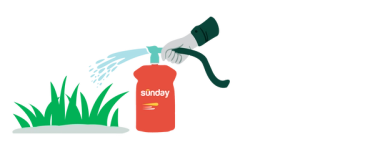
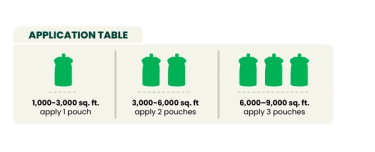
Lawn Aid application tips
- Make sure your lawn is sufficiently hydrated before applying.
- Water your lawn 24 hours after application if supplemental
water is needed. - Don’t apply to a lawn that’s drought- or heat-stressed.
- Wait to walk on your lawn until the fertilizer has dried.
Lawn Aid FAQs
What is Lawn Aid?
Lawn Aid is a liquid lawn preventative treatment that helps reduce the impacts of heat stress and improve resilience to summer heat.
It’s powered by a hearty dose of seaweed and a touch of potassium but, crucially, no nitrogen. The result? Strong roots, greener grass, and heat-resilient turf!
How do I use Lawn Aid with other Sunday products?
Lawn Aid is made to work with Sunday liquid fertilizers and custom lawn plans. To maximize nutrient absorption, ensure each application dries (typically 4-24 hours, based on climate).
For best results, control weeds first. Then, use Lawn Aid before applying fertilizer, seeds, or other Sunday products.
What if I apply out of order?
If you applied fertilizer or another liquid product first, wait 24 hours for the product to dry, then apply Lawn Aid.
Regardless of the order in which products are applied, we allow Lawn Aid (or any liquid product) at least 24 hours to dry before doing anything else to your lawn. This ensures that other lawn care products won't disrupt Lawn Aid's effectiveness.
How and where do I store products?
Store this product sitting upright with the cap closed tightly. Do not store in excessive heat or freezing temperatures. Pouches can be reused, but shake well before each use for optimal performance.







